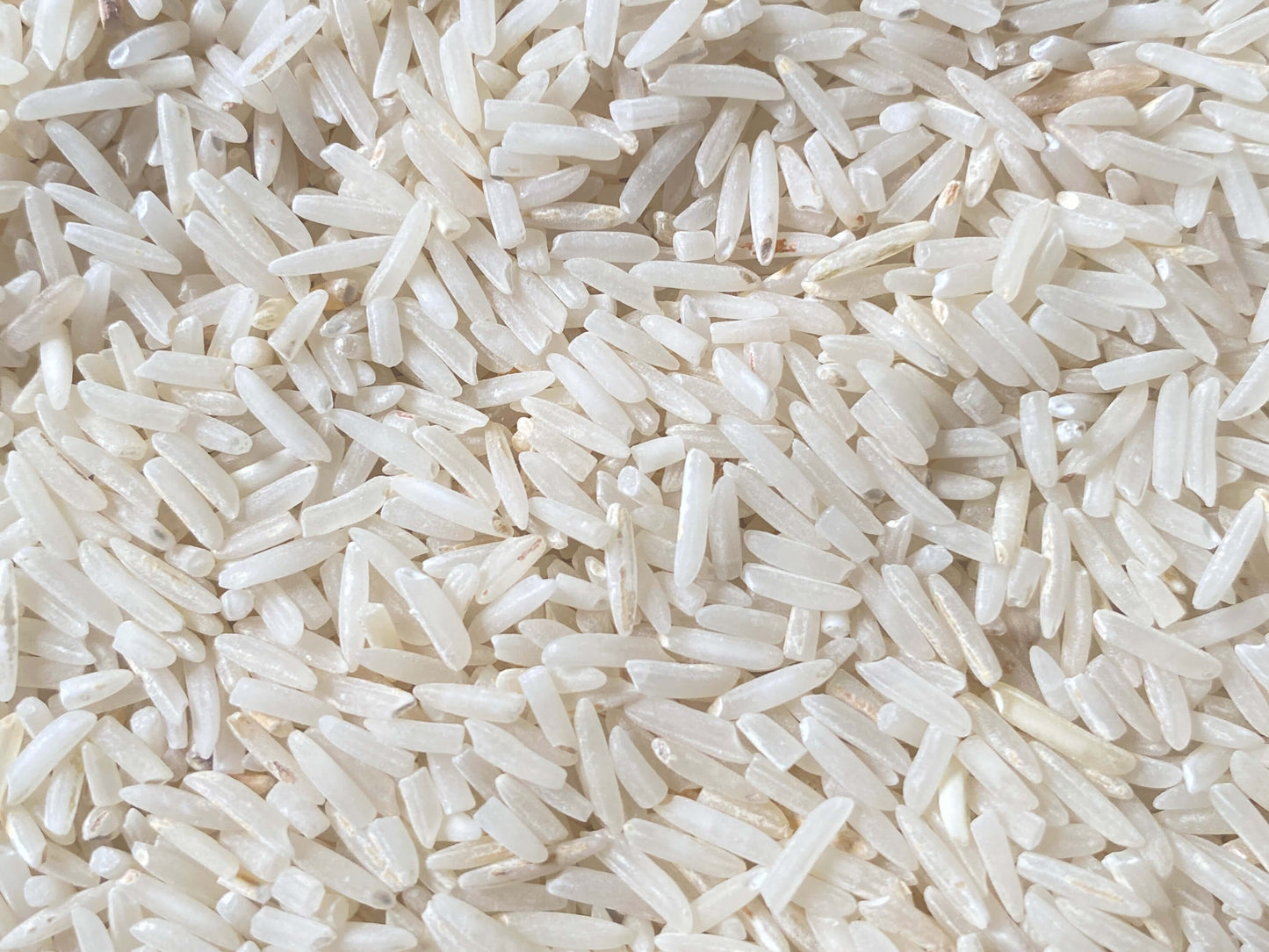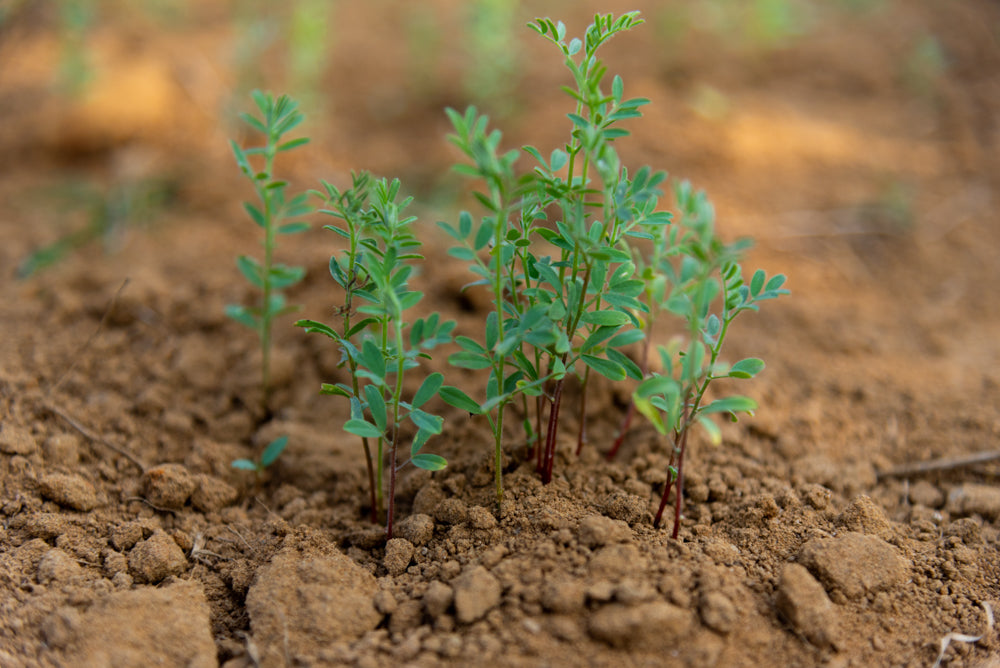Taraori Basmati
Taraori Basmati
Couldn't load pickup availability
- single-origin heirloom
- cultivated with love
- nature-friendly farming
Taraori Basmati is said to have been first cultivated in 1933, it being named after the region in Karnal where it is widely consumed. The first mention of Basmati, in general, is found in 16th century texts and folklore wherein it is defined as a special rice fit for festive occasions and celebrations. This one is sourced from the lower regions of Haridwar grown by farmers who follow natural farming techniques for indigenous variety of grains.
| taste | popcorn |
| aroma |
●●○○○ |
|
appearance |
the uncooked grains are slender, long and pale white in colour |
|
cooking |
absorption method |
| time | 12-15 minutes |
| storage |
store it in a dark place, so that it does not attract moisture, and away from direct sunlight |
what you can cook with
This variety of rice is for those really special occasions. With Taraori Basmati, you cannot really go wrong with pilafs and of course, biryani. We suggest you save this one mostly for savoury meals to impress your guests with elaborate rice dishes.
| botanical name | Oryza sativa |
| origin | Haridwar, Uttarakhand |
| processing | atap (raw) |
our philosophy
We believe that the way we cultivate, process, buy, and cook our food can change the world for better. Every time you decide to buy food that has been produced in a sustainable way, you make the world a better place. Learn more about our manifesto.



we are passionate about
We believe that the way we cultivate, process, buy, and cook our food can change the world for better. Every time you decide to buy food that has been produced in a sustainable way, you make the world a better place.
FAQ
How much are the shipping cost?
The shipping cost vary depending on your cart and location. You will see the shipping cost and available shipping options during check out.
How many days does the shipping take?
The shipping time is between 6-12 days depending on the location. However, due to holidays or other unforeseen circumstances, the shipping time might be longer.
Do you ship everywhere?
Almost. We are able to ship to all states except for Andaman & Nicobar, Jammu & Kashmir, Assam, Sikkim, Nagaland, Meghalaya, Manipur, Mizoram and Arunachal Pradesh. However, you can get in touch with the customer care and we can try to arrange for a special shipment.
Can I return a delivered product?
No. Due to the nature of our products, they are non-returnable. However, if you have received a damaged or defective product, you can raise a refund request by sending photos of the entire package including the outer box as well as the content writing an email to: contact@amar-khamar.com within 2 days of delivery. Kindly note that we can only replace/refund for the damaged products with photo proofs attached of both the outer package and the contents inside. A full refund will be provided within 30 days of raising the request.
Help! I'm not being able to purchase online!
Feel free to give us a call and we’d be glad to help you +91 93307 42283
Can I have different billing and shipping addresses?
Yes. During the ordering process, you are asked to fill in the billing address. At the end of this field, you have the option to add a different shipping address.
Can I pick-up my orders in Kolkata?
Yes, you can opt for pick-up during check out. We will inform you once your order is ready for pick-up from ouramar khamar pick-up point in 83 A, Kankulia Road, Kolkata -29.
You can also visit our store ANNAJA in 21B Hindusthan Road, Kolkata - 29 to buy your products.

visit our store in Kolkata and enjoy a meal at Amar Khamar Lunch Room
From ডাল ভাত to ছুটির ভাত - at Amar Khamar Lunch Room, where we celebrate food shaped by years of unacknowledged excellence in the kitchens of our very homes. With prime produce from our farming communities across different districts of Bengal, we bring you the diversity of a Bengali home-cooked meal.
sign up, stay inspired!
Here good things come to your inbox:


